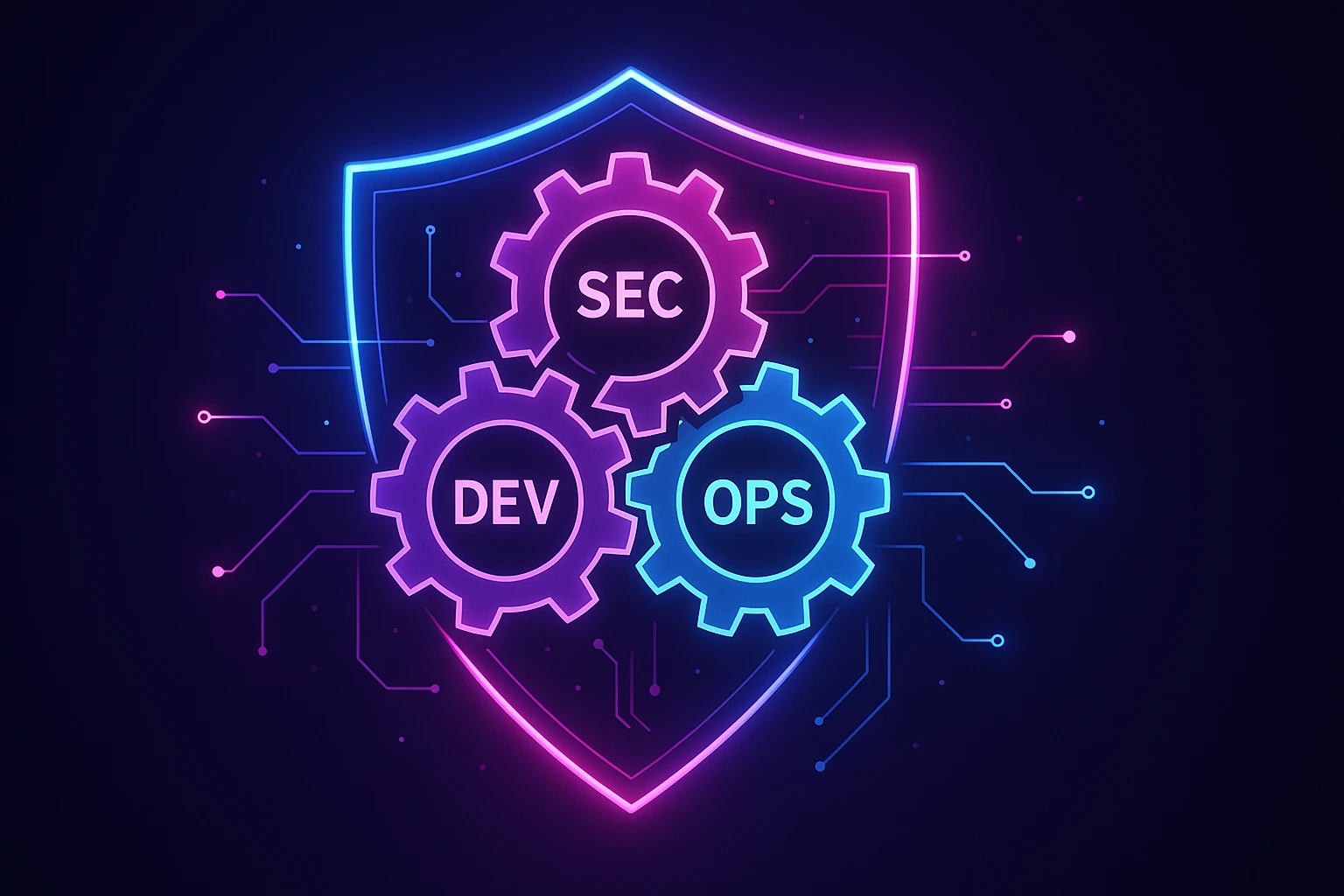Control failures in SOX compliance can delay earnings announcements, damage investor confidence, and trigger SEC investigations that persist for years. Beyond regulatory penalties, non-compliance creates significant costs through extended audit processes, remediation efforts, and potential restatements that undermine market trust.
The Sarbanes-Oxley Act emerged from the corporate accounting scandals of the early 2000s, establishing strict requirements for how public companies manage financial reporting, internal controls, and data access. Achieving SOX compliance requires coordinated effort across finance, IT, and executive teams to maintain complete audit trails, support accurate disclosures, and ensure systems and processes can withstand regulatory scrutiny.
Who Must Comply with SOX Requirements
SOX compliance is mandatory for any company publicly traded on a U.S. stock exchange, including NYSE, NASDAQ, or other U.S. exchanges, regardless of headquarters location. However, the regulatory reach extends far beyond the obvious public company cases, creating compliance obligations for organizations that may not initially recognize their exposure. Understanding these broader requirements helps companies avoid costly surprises and ensures they build appropriate controls before facing regulatory scrutiny.
The scope of SOX compliance extends beyond obvious cases. For example, private companies preparing for IPO must establish SOX-ready controls, audit documentation, and financial reporting processes before going public. Similarly, subsidiaries and affiliates of public companies must align with SOX obligations when their financial data rolls up to public parent entities or when they're owned by public companies. Building these systems early prevents costly last-minute scrambles and potential delays in public offerings.
Sox Compliance requires cross-functional accountability throughout your organization:
- Finance teams own reporting processes and documentation
- IT maintains data integrity and access controls
- Legal handles regulatory interpretation and risk mitigation
- Executives (CEO and CFO) face personal liability for certifying financial statement accuracy
The Three-Pillar SOX Framework
Effective SOX compliance rests on three interconnected pillars that work together to ensure financial reporting integrity. These pillars—Controls, Documentation, and Testing—create a comprehensive system where each element reinforces the others to provide reliable financial reporting and audit readiness. Organizations that master this framework can demonstrate control effectiveness while building operational resilience that extends beyond regulatory requirements.
Pillar 1: Controls (Sections 302, 404, 409)
SOX requires specific control types that address executive accountability, internal control effectiveness, and real-time disclosure obligations. These controls form the foundation of financial reporting reliability and must be designed to prevent, detect, and correct material misstatements.
To meet these regulatory requirements, organizations must implement controls across three critical areas:
- Executive Certification Controls (Section 302): CEOs and CFOs must personally certify financial report accuracy through documented review processes, including department-level sub-certifications, reconciliation logs, and evidence trails at each reporting layer.
- Internal Controls Over Financial Reporting (Section 404): Management must assess control design and effectiveness annually, requiring documented process flows, role-based access policies, automated transaction controls, and comprehensive testing results.
- Real-Time Disclosure Controls (Section 409): Systems must detect and escalate material changes rapidly through predefined thresholds, automated alerts, escalation workflows, and timestamped audit trails.
Pillar 2: Documentation (Section 802)
Complete documentation proves controls exist, function as designed, and operate consistently while meeting SOX's stringent record-keeping requirements. Documentation must be tamper-proof, searchable, and retained for five to seven years.
Building this evidence trail requires maintaining comprehensive records across five essential areas:
- Process Documentation: Narratives and flowcharts mapping financial processes from initiation to completion, showing how data flows between systems and how controls operate within those flows.
- Control Matrices: Clear links between identified risks and corresponding controls, including control owners, test procedures, and success criteria.
- System Interface Documentation: Technical specifications showing how data moves between platforms, including validation rules, transformation logic, and error handling.
- Policy Documentation: Step-by-step guidance for control execution, including roles, responsibilities, and escalation procedures.
- Evidence Files: Proof that control activities were performed, including timestamps, responsible users, and results.
Pillar 3: Testing (Section 404)
Regular testing validates both control design and operating effectiveness as required by Section 404's annual assessment mandate. Testing must provide sufficient evidence to support management's assessment and external auditor evaluation.
Creating this foundation of evidence requires structured testing across four key dimensions:
- Testing Schedule: Aligned with reporting timelines and risk assessments, with more frequent testing for high-risk controls and those supporting quarterly certifications.
- Test Procedures: Clear pass/fail criteria with standardized documentation requirements that satisfy both management and auditor evidence needs.
- Results Documentation: Timestamped evidence of test execution, including responsible parties, outcomes, and supporting work papers.
- Exception Management: Logs of control failures, remediation plans, status updates, and resolution confirmation that demonstrate continuous monitoring.
Technical Implementation
Converting SOX requirements into operational reality requires robust technical systems that can enforce controls, capture evidence, and maintain data integrity under regulatory scrutiny. The technical foundation must support both day-to-day operations and audit requirements without creating operational bottlenecks or compromising system performance. These core technical components work together to create a compliance-ready infrastructure that scales with business growth and regulatory changes.
Change Management Controls
Every update to reporting tools, patches, or configuration changes in financial systems must be tracked and controlled. Uncontrolled changes represent one of the highest risks to financial reporting integrity, as they can introduce errors, create security vulnerabilities, or disrupt established controls. Organizations must implement robust change management processes that balance operational efficiency with compliance requirements, ensuring that all modifications are properly authorized, tested, and documented before implementation.
A compliant change management process includes:
- Clear documentation of changes and business justification
- Testing procedures before production implementation
- Approval workflows, including retroactive review for emergency changes
- Rollback plans for updates that create issues
Access Controls and Role Segregation
Segregation of duties prevents any single person from creating and approving financial transactions. Role-based access ensures employees only access what their job requires. Proper implementation of access controls requires a systematic approach that considers both technical permissions and business process workflows. Organizations must design role hierarchies that reflect their operational structure while maintaining appropriate separation between conflicting duties, such as transaction initiation, approval, and recording.
Implementation requires:
- Regular access reviews with business owner approval
- Documentation of permissions and approval workflows
- Real-time monitoring for permission creep or unusual activity
- Bi-annual recertification cycles led by business owners
Audit Trails and Traceability
Every user action, data change, and system update must be recorded in tamper-proof format. Comprehensive audit trails serve as the foundation for demonstrating control effectiveness and investigating potential issues. These records must capture sufficient detail to reconstruct events, identify responsible parties, and provide evidence of proper authorization and approval processes. The audit trail system itself must be protected from unauthorized modification to maintain its integrity as evidence.
Comprehensive audit trails include:
- Report version histories with change attribution
- Metadata and configuration change logs
- Data access logs with user identification
- System modifications with timestamps and user attribution
Data Retention Requirements
Section 802 requires public companies to retain financial documents and audit records for five to seven years in tamper-proof, searchable, and accessible formats. Organizations must develop comprehensive retention policies that address both regulatory requirements and business needs.
The retention system must protect against unauthorized deletion or modification while providing auditors and regulators with timely access to historical records. WORM (Write Once, Read Many) storage technology provides the foundation for compliant data retention, offering encryption, role-based access controls, automated retention schedules, and fast search capabilities in a single solution.
Required Records:
- General ledgers and journal entries
- Trial balances and subsidiary ledgers
- Financial reporting communications
- Change logs and system configuration histories
- Metadata, access logs, and audit trails
- Documentation supporting accounting decisions
Operational Excellence
Moving beyond basic compliance to operational excellence requires strategic automation, meaningful metrics, and continuous improvement processes that evolve with business needs and regulatory changes. Organizations that achieve operational excellence in SOX compliance reduce audit costs, improve control reliability, and build competitive advantages through superior financial reporting capabilities. This advanced approach transforms compliance from a cost center into a driver of operational efficiency and stakeholder confidence.
Automation Strategy
Manual processes increase failure risk and complicate audit evidence collection. Strategic automation reduces human error, improves consistency, and provides more reliable audit evidence by eliminating manual intervention in routine compliance activities. Organizations should prioritize automation initiatives based on risk assessment, considering both the potential impact of process failures and the complexity of manual oversight required. Successful automation programs require careful planning to ensure that automated controls are properly designed, tested, and monitored.
Strategic automation should target:
- Backup and Recovery: Automated backup schedules with regular restore testing to validate data integrity and completeness.
- Control Testing: Automated workflows that execute tests, collect evidence, and flag exceptions for human review.
- Access Monitoring: Real-time alerts for access violations, unusual activity, or role conflicts.
- Compliance Reporting: Automated generation of compliance reports with standardized formatting and evidence compilation.
Monitoring and Metrics
Effective SOX programs use metrics to measure control effectiveness and identify improvement opportunities. Key performance indicators provide management with visibility into program health and help identify trends that may indicate emerging risks or control deterioration.
Metrics should be designed to provide actionable insights rather than simply measuring activity levels. Regular reporting and analysis of these metrics enables proactive management of compliance risks and demonstrates the organization's commitment to continuous improvement.
Control Performance Metrics:
- Control failure rates by type and business process
- Time to remediate control deficiencies
- Percentage of controls with clean testing results
System Performance Metrics:
- Data backup success rates and restore test results
- Access review completion rates and timeline adherence
- Change management approval cycle times
Audit Readiness Metrics:
- Documentation completeness scores
- Evidence collection timelines
- Auditor inquiry response times
Continuous Improvement
SOX compliance programs must evolve with business changes, regulatory updates, and technology advances. Static compliance programs quickly become obsolete as organizations grow, implement new technologies, or enter new markets.
Effective continuous improvement requires regular assessment of both control design and operational effectiveness. Organizations should establish formal processes for evaluating program performance, identifying enhancement opportunities, and implementing changes that strengthen compliance while supporting business objectives.
Regular program assessment should evaluate:
- Control design effectiveness against emerging risks
- Process efficiency and automation opportunities
- Technology platform capabilities and limitations
- Staff training needs and capability gaps
Building Your SOX Program
Successfully implementing SOX compliance requires a structured approach that balances immediate regulatory needs with long-term operational sustainability. Organizations must carefully sequence their implementation efforts to build foundational capabilities before advancing to more sophisticated controls and automation. A well-planned SOX program implementation reduces risk, controls costs, and creates a framework that supports business growth while maintaining regulatory compliance.
Implementation Roadmap
Building a SOX program works best when you break it into manageable phases rather than trying to do everything at once. Start with the basics like governance and documentation, then move on to designing and testing controls. This step-by-step approach helps you avoid overwhelming your team while making sure you don't miss important requirements.
- Phase 1: Foundation (Months 1-3) Establish governance structure, select control framework (COSO for financial controls or COBIT for IT governance), and document current state processes.
- Phase 2: Control Design (Months 4-6) Design controls based on risk assessment, implement technical controls, and establish testing procedures.
- Phase 3: Testing and Validation (Months 7-9) Execute initial control testing, document results, and remediate identified gaps.
- Phase 4: Optimization (Months 10-12) Implement automation, refine processes based on testing results, and prepare for external audit.
Framework Selection
The control framework you choose affects how much work your team will do and what kind of documentation you'll need to maintain. COSO works well for most companies focused on financial controls, while COBIT is better if you have complex IT systems. Pick the one that matches your company's size and needs rather than trying to create something from scratch.
- COSO Framework: Better suited for smaller teams focused on financial controls, emphasizing control environment, risk assessment, control activities, information and communication, and monitoring.
- COBIT Framework: Designed for complex IT environments, focusing on governance and management of enterprise IT with detailed process reference models.
Technology Integration
SOX controls must integrate seamlessly with existing technology platforms. For organizations using cloud platforms like Salesforce, controls need built-in backup, access management, and change tracking capabilities rather than layered-on solutions.
Strong compliance programs embed reliability into system architecture through storage-layer retention policies, tamper-proof logs, and automated processes that don't rely on manual intervention.
Building Trust Through Operational Excellence
SOX compliance success depends on building systems that can prove what happened and when it happened. Control failures typically stem from documentation gaps, unreliable backups, or inconsistent access reviews rather than technical breakdowns. The most effective compliance programs integrate controls into daily operations rather than treating them as separate audit exercises, reducing compliance overhead while improving overall operational reliability and risk management.
For organizations managing financial data in cloud platforms, SOX requirements demand integration with backup, access control, and change tracking capabilities. Building these controls into your platform foundation ensures compliance without disrupting operational workflows or requiring manual oversight. Strong SOX compliance creates a foundation of trust that benefits stakeholders, reduces operational risk, and positions organizations for sustained growth in regulated markets.
If your organization relies on Salesforce for financial processes, achieving SOX compliance doesn't have to be a constant struggle with manual controls and fragmented documentation. Flosum's Salesforce-native DevOps platform delivers the automated backup, comprehensive audit trails, and robust access controls that SOX requires—all built directly into your Salesforce environment. Talk to one of our experts to discover how Flosum can transform your Salesforce SOX compliance from a burden into a competitive advantage.
Thank you for subscribing








